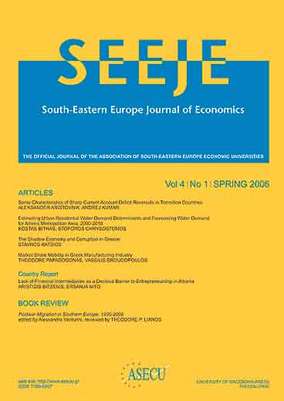Identifying spatial labor markets in Greece from the 2001 travel-to-work patterns
Part of : SEEJE ; Vol.8, No.1, 2010, pages 111-128
Issue:
Pages:
111-128
Author:
Abstract:
The article examines inter-municipal commuting flows in Greece, collected via the 2001 census, and delineates the country’s labor market areas (LMAS). It finds that the LMAS of Athens (3.9 million inhabitants) and Thessaloniki (1.1 million) exceed the homonymous urban-planning complexes by 8 and 15 times, respectively. These LMAS, along with the LMAS of Patras (245 thousand) and Iraklion (233 thousand), host about half the country’s population. Another thirty-eight Clusters of municipalities and eight self-contained municipalities of 20-184 thousand Inhabitants jointly host a quarter of the country’s population. The picture Is complemented by the presence of ten clusters of municipalities and 607 self contained Municipalities with smaller populations. Overall, the article advances our understanding of how the country functions at the sub-national level.
Subject:
Subject (LC):
Keywords:
labor market areas, functional economic areas, commuting flows, localities, urban and micro-regional policy areas
Notes:
Περιέχει σημειώσεις, πίνακες, χάρτες και βιβλιογραφία, Earlier versions of the article were presented at the 26th Conference of the Standing Committee on Regional and Urban Statistics (Europe Group), and in seminars at the University of Thessaly and kEPE. Thanks are due to the National Statistical Service of Greece for supplying the data and promptly answering the queries regarding their collection, the participants in the above conference and seminars for constructive comments, and an anonymous referee for useful suggestions. I am indebted to Prof. Martin Schuler of the École Polytechnique Fédérale de lausanne for bringing me up to date on relevant issues prior to my involvement with the OECD’s Working Party on Territorial Indicators in 2004. The usual disclaimer applies., JEL Classification: J49, R12




